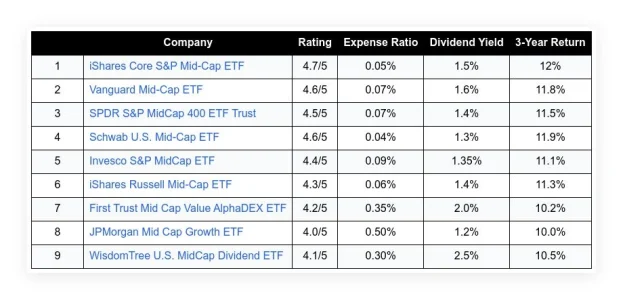You’re not alone if you’re 50 or older and feeling behind on. Often, people reach their peak earning years without having saved enough for the retirement they envisioned. A Bankrate survey found that 57% of Americans are behind on their retirement savings — a trend that appears to be particularly pronounced among older workers. Specifically, 68% of Gen X workers (ages 44-49) and 66% of baby boomers (ages 60-78) feel that they are behind on their retirement savings.
Moreover, AARP research shows 20% of people over 50 don’t have retirement savings. Additionally, over half (61%) worry about having insufficient funds for retirement.
It’s not all bad news, though. To enhance your retirement savings, the IRS offers you a powerful tool — catch-up contributions.
For workers aged 50 and older, these extra contributions enable you to contribute more to retirement accounts, such as 401(k)s and IRAs. By using catch-up contributions strategically, you can close the savings gap and secure a more comfortable retirement.
In this post, we examine how they work and how you can take advantage of them.
Table of Contents
ToggleWhat Exactly Are Catch-Up Contributions?
Essentially, catch-up contributions are additional allowances the IRS permits individuals over 50 to make by the end of the calendar year. And, believe it or not, it’s actually a straightforward philosophy. If you were unable to save together earlier in your career, you have a chance to “catch up” as you approach retirement. The reason for this might include starting a family, navigating economic downturns, or simply starting to save later in life.
According to their respective catch-up allowances for the year 2025, these retirement accounts have the following standard contribution limits:
- 401(k)s and similar workplace plans. The catch-up contribution in 2025 is $7,500, bringing the total contribution to $31,000. Starting in 2025, individuals aged 60-63 can contribute even more to their 401(k)s and specific other employer-sponsored plans, up to $11,250, as part of the “Super” catch-up contribution program.
- IRAs. In 2025, the catch-up contribution is $1,000, bringing the total contribution to $8,000.
- SIMPLE IRAs. The standard contribution limit for SIMPLE IRAs is $16,500. For those 50 and older, however, the catch-up contribution is $3,500, resulting in a total of $ 23,500.
- HSAs. For those age 55 or older, catch-up contributions to Health Savings Accounts (HSAs) increase by $1,000 in 2025. For individual plans, the total potential contribution is $5,300 ($4,300 base + $1,000 catch-up), and for family plans, it is $9,550 ($8,550 base + $1,000 catch-up).
It’s essential to note that these limits apply per person. In other words, if you’re married and both you and your spouse are over 50, you can effectively double these amounts. For example, a married couple over 50 could contribute $61,000 to their 401(k)s and $16,000 to their IRAs every year. Suffice it to say, that’s a substantial boost to your savings.
Why Catch-Up Contributions Aren’t Just “Extra,” They’re Essential
While the ability to contribute more may seem obvious, catch-up contributions offer much more than simply more cash.
The enduring power of compounding.
No matter how late you start, compound interest remains a powerful ally. Even if you don’t have as many decades as younger savers, every extra dollar you put into your retirement account can grow exponentially. For example, with an average return of 7% on investments, a steady $7,500 catch-up contribution to a 401(k) over a decade can conservatively grow to more than $100,000.
With this growth added to your regular contributions, employer contributions, and existing savings, you will enjoy real financial comfort in the future. There’s no theory to this; it’s just how compounding works in your favor.
Taking advantage of tax advantages tailored to your needs.
Depending on your current tax situation and projected future tax situation, catch-up contributions can provide powerful tax benefits:
- Traditional retirement accounts (e.g., 401(k)s, IRAs). Typically, pre-tax dollars are used to fund these accounts. As a result, the amount you contribute is subtracted from your current year’s taxable income, potentially resulting in a lower tax bill. When you are earning a higher income, this might be of particular interest to you. When you withdraw your investments in retirement, they are taxed as ordinary income.
- Retirement accounts that are Roth (e.g., Roth 401(k), Roth IRAs). Roth accounts are funded with after-tax dollars. As such, there is no immediate tax deduction. In retirement, however, all qualified withdrawals, including all growth, are completely tax-free. Using this strategy is ideal if you anticipate being in the same tax bracket during retirement as you are now.
In either case, catch-up contributions can reduce your current tax burden or shield your future retirement income from taxes.
How to close the savings gap — practically.
Let’s face it: most people in their 50s realize they haven’t saved enough. Often, financial goals change, life throws unexpected curveballs, and saving diligently does not begin early enough. This gap has been consistently highlighted in recent studies.
For instance, Guardian Life reports that the average 55- to 64-year-old has saved approximately $537,560 for retirement. Yet, the median household retirement savings for retirees is $185,000. This might seem like a considerable sum, but it typically falls significantly short of the amount most financial experts recommend for a comfortable retirement, given the rising costs of healthcare.
It’s for this reason that catch-up contributions are explicitly designed. You can narrow that gap in a tangible, practical, and highly effective way with these tools, especially if your income has increased in your peak earning years. It’s a chance to get ahead of what’s behind us or even to get ahead of it.
Smart Strategies to Maximize Your Catch-Up Contributions
It is one thing to have the option to contribute more; it is another to know how to do so effectively. To fully leverage catch-up contributions, here are some smart strategies:
Prioritize your workplace 401(k) — especially the match.
The first thing you should do if your employer offers a 401(k) or similar workplace retirement plan is enroll in it. Why? It’s because of the employer match. This is, quite literally, free money.
As such, you should contribute enough to capture the full employer match before considering other savings options. As soon as you’ve secured that free money, your next goal should be to max out your regular contribution limit ($23,500 for 2025), and then to hit the catch-up limit ($7,500 for 2025).
It’s always a good idea to check with your HR department or plan administrator for confirmation. When you reach the age of 50, many employers’ systems are set up to allow catch-up contributions to be made automatically; however, it is essential to verify this.
Don’t overlook the Individual Retirement Account (IRA).
In addition to your 401(k) at work, contributing to a Traditional or Roth IRA can diversify your retirement savings and help your tax strategy. Even though the catch-up contribution is only $1,000, when combined with the regular limit ($7,000 for 2025), it adds up. That $1,000 a year, if invested wisely, can add up over time.
Roth IRAs, in particular, have income limits that are of critical importance. If your Adjusted Gross Income (AGI) exceeds certain thresholds, you may not be able to contribute directly to a Roth IRA. However, a “backdoor Roth IRA” strategy might be an option in such cases. Obviously, this is a more complex maneuver and should be discussed with a qualified financial advisor before executing it.
Strategically utilize bonus or windfall income.
Many people in their 50s and 60s receive annual bonuses, raises, tax refunds, or unexpected inheritances. If you are fortunate enough to receive a windfall, it is an excellent opportunity to pay for your catch-up contributions without feeling a pinch in your regular monthly budget. Rather than spending these funds, put them straight into your retirement accounts.
Ultimately, you can think of it as giving your future self a substantial raise. Using this strategy can help you accelerate your savings path rapidly.
Seriously consider a Health Savings Account (HSA).
Health Savings Accounts (HSAs) are sometimes referred to as the “stealth retirement account”, and for good reason. It offers a remarkable triple tax benefit.
- Tax-deductible contributions. In the year of contribution, the money you contribute reduces your taxable income.
- Tax-free growth. Federal income taxes do not apply to your investments.
- Tax-free withdrawals. Withdrawals made for qualified medical expenses (and healthcare is a significant retirement expense!) are entirely tax-free.
HSA contributions are eligible for those enrolled in high-deductible health plans (HDHPs). Additionally, if you are over 55, you can contribute an extra $1,000 in catch-up contributions to your HSA in addition to the standard contribution limits (which will be $4,300 for self-only coverage in 2025, and $8,550 for family coverage).
In retirement, one of the most significant and unpredictable expenses for retirees is healthcare costs. By maxing out your HSA, especially with the catch-up, you can cover these costs very effectively.
Avoid These Common Pitfalls
You should be aware of common mistakes that can diminish the effectiveness of catch-up contributions:
- Assuming you can’t catch up. There is perhaps no greater pitfall than this. Many people believe it’s “too late” to change things. This is simply untrue. When you invest well, even a few years of higher contributions can make a significant difference in your nest egg. Even though you contribute less, your contribution can still have a considerable impact over time.
- Forgetting about Required Minimum Distributions (RMDs). Consider your future tax liability when planning retirement contributions. Traditional retirement accounts must begin taking required minimum distributions (RMDs) once you reach age 73 (or 75, depending on your birth year). As ordinary income, these RMDs are subject to taxation. Roth IRAs, on the other hand, do not require RMDs during the owner’s lifetime. As you approach retirement, you may benefit from strategically contributing to a Roth IRA or considering a Roth conversion (consulting a financial advisor).
- Not adjusting your budget. Even though maxing out catch-up contributions is commendable, it often requires lifestyle adjustments. You may be able to find areas in your current budget where you can cut back and redirect funds to retirement if you examine it honestly. For example, you can downsize your car, cook more at home rather than eat out, or postpone a major vacation for a year. In retirement, these seemingly small sacrifices can yield long-term financial rewards that will serve you for decades.
What If You Still Feel Behind?
If you still feel significantly behind on your retirement savings despite understanding these options, don’t panic. When we panic, we tend to do nothing. Instead, take action.
The first step is to get a clear picture of the situation by;
- Assess your current savings. You should know exactly where you stand across all of your accounts.
- Set a clear retirement goal. If you were to imagine your ideal retirement, how much would it cost?
- Commit to maxing out catch-up contributions. Make this a non-negotiable priority.
- Talk to a financial planner. An experienced financial advisor can help you develop a personalized strategy, project your future, and navigate complex tax implications. In addition to providing an objective viewpoint, they can create a roadmap tailored to your specific needs.
When people become intentional and disciplined about saving, they often find that they can accomplish a great deal in a relatively short time. One of the most powerful and direct ways to make up for lost time and build a more secure financial future is through catch-up contributions.
Final Thoughts
If you’re 50, you don’t mean you’ve lost the chance to make an impact — it means you’re on the verge of a powerful opportunity. You get a second wind in the retirement race when you make catch-up contributions. No matter how serious you are about saving, you can maximize your savings by taking advantage of catch-up contributions.
However, you need to get started right now. Discuss your retirement accounts with your advisor and adjust your budget as needed. By making extra contributions, you can build the future you deserve.
FAQs
Do I automatically qualify for catch-up contributions when I turn 50, or do I need to take specific action?
You don’t start making them automatically, but you become eligible to do so. In a workplace plan, such as a 401(k), you typically need to notify your employer’s Human Resources department or plan administrator that you wish to increase your contribution. Your payroll deductions will then be adjusted. When contributing to an IRA, simply pay the higher amount directly to the IRA custodian (e.g., Vanguard, Fidelity, Schwab), ensuring that you do not exceed the combined regular and catch-up limits.
What if I turn 50 late in the year? Can I still make catch-up contributions for that entire year?
Yes!
By IRS rules, if you turn 50 during the calendar year (including December 31st), you are eligible for catch-up contributions. As long as you contribute the full catch-up amount by the deadline for tax filing (usually April 15th of the following year for IRAs), you can still contribute the full catch-up amount for that year.
Are there income limits for making catch-up contributions?
You can generally make catch-up contributions to a 401(k) or similar workplace plan regardless of your income level. As soon as you turn 50, you’re eligible for the catch-up contribution if you’re eligible to participate.
In contrast, Roth IRAs do have income limitations, and if you earn more than those limits, you will usually need to use a “backdoor Roth” strategy to contribute. If you have an eligible regular contribution to a Roth IRA, then you simply add the catch-up amount to it. Deductibility can be limited based on income and whether a workplace retirement plan or a traditional IRA covers you.
Can I make catch-up contributions if I’m self-employed or own a small business?
Self-employed individuals can establish retirement plans, including Solo 401(k)s and SEP IRAs. Once you turn 50, you can also make catch-up contributions. As a Solo 401(k) participant, you can contribute both as an employee and as an employer, potentially allowing for very high contributions.
Often, catch-up contributions are included in the higher overall contribution limit for self-employed individuals with SEP IRAs, but it’s important to understand each plan’s specific rules. I strongly recommend consulting a financial advisor familiar with self-employed retirement plans.
What happens if I accidentally contribute more than the maximum (including catch-up) to my retirement accounts?
If you exceed the allowed amount (including catch-up amounts), it’s considered an “excess contribution.” This can result in IRS penalties. There is typically a 6% excise tax on excess amounts in IRAs for each year they remain in the account. For 401(k)s, excess contributions can be subject to taxes and penalties, too.
As such, excess contributions must be corrected promptly. For tax purposes, you must withdraw excess amounts and earnings related to them by the deadline (including extensions). To determine what steps to take if you have overcontributed, contact your plan administrator or an accountant as soon as possible.
Image Credit: Kaboompics.com; Pexels

















